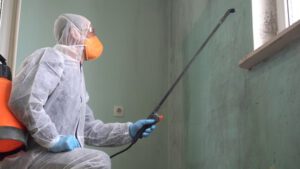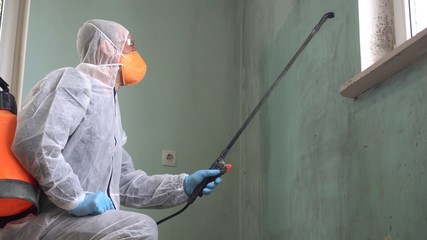If you suspect that your home has mold, you should have it remediated by a professional like Mold Removal Los Angeles. While it is tempting to just pull up the carpet and start over, you will be spreading the spores and creating new colonies. In addition, mold can grow deep into the walls and may require additional treatment of the studs. This can prevent an immediate regrowth of the mold.
Mold is a multicellular bacterium that reproduces by producing numerous spores. These spores can contain a single nucleus or a multinucleate nucleus. Some mold species produce both types of spores. Most spores are hydrophobic, but some are more hydrophilic than others. They are typically spherical or ovoid and have a slimy sheath. They are often affixed to a surface, such as clothing.
Mold grows in multicellular filaments called hyphae. These filaments contain multiple identical nuclei, which make them appear fuzzy on surfaces. In contrast, yeast grows in a single cell. Mold spores are usually produced in damp areas. In addition to their fuzzy appearance, molds can also be a variety of colors and shapes.
Molds are abundant in nature and can be found on fruit, berries, the stomachs of mammals, and even on the skin. Some are even used in food production. For instance, Penicillium is used to make cheese. Neurospora is used to make tofu, and some species are used for making oncom. These organisms also help us understand the cell cycle and biopolymers.
Mold is a common household fungus. They are often found in damp areas and can spoil food. Some mold species can damage crops and spoil bread. These fungi form filaments called hyphae. The spores can be transported from room to room via open windows and ventilation systems. They can also attach to people, shoes, and clothing.
While mold has an unpleasant connotation, it actually has many useful functions. Some types are responsible for blue cheese and penicillin. Others are used in baking. Some types of mold are toxic and can cause respiratory problems. They can also produce mycotoxins, which are dangerous to humans. If you suffer from mold allergies, you should seek medical care. The symptoms of this illness can range from watery eyes to chronic cough and sinus problems.
Molds are common in homes. They grow in moist environments, where they feed on organic materials. In particular, they grow well on wood products and ceiling tiles. They can also live on dust, paints, and insulation.
Mold is a type of fungus that lives on damp surfaces, including wood, paper products, and dust, that contains dead skin cells. It cannot grow on inorganic materials, such as cement or wood shingles. It also grows on dust and organic residues, such as dirt. It usually grows on the north side of a home.
Usually, only ten types of mold live indoors, and most of them can cause health issues. Mold symptoms can include feeling sick more often, coughing more than usual, and having itchy eyes and nose. If you’re concerned that mold may be causing these symptoms, try to prevent it by keeping your house at an optimal humidity level.
It is common for mold to grow on damp surfaces in homes. It does not produce toxins, but it can trigger allergy symptoms and other symptoms, especially in people with asthma. It is also a serious health risk for children and the elderly, and it can damage your carpets and clothes. In addition, it can cause permanent damage to your walls, window frames, and other items in your home.
The first step in tackling mold-infested surfaces is to clean them thoroughly. Make sure to wear protective gear and clean the affected area thoroughly with hot, soapy water. If the mold is on porous or absorbent materials, you may need to throw them away. Otherwise, you may have to use a professional cleaning agent.
